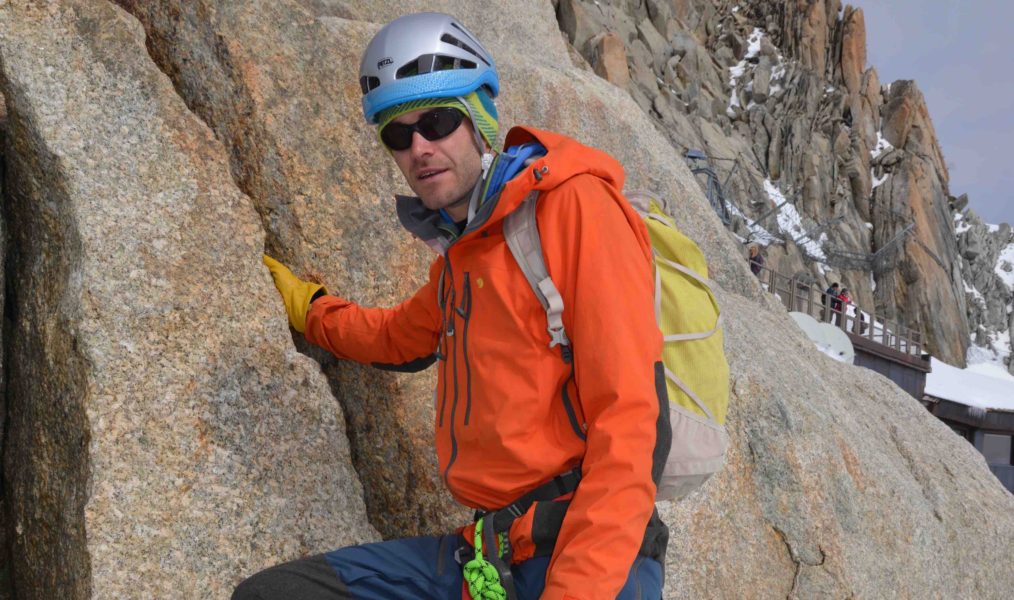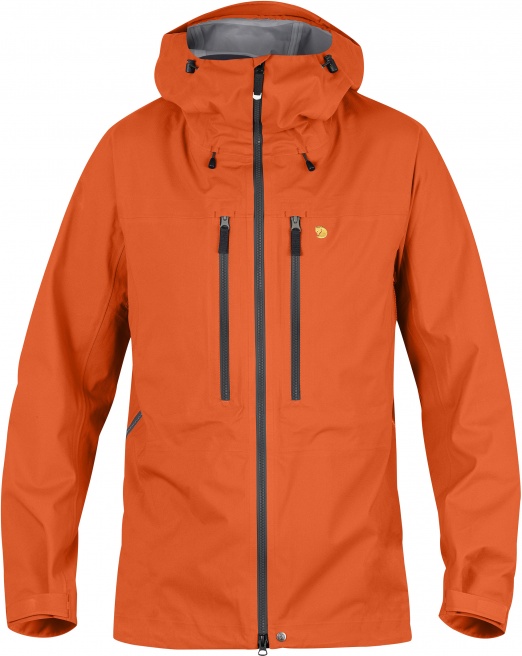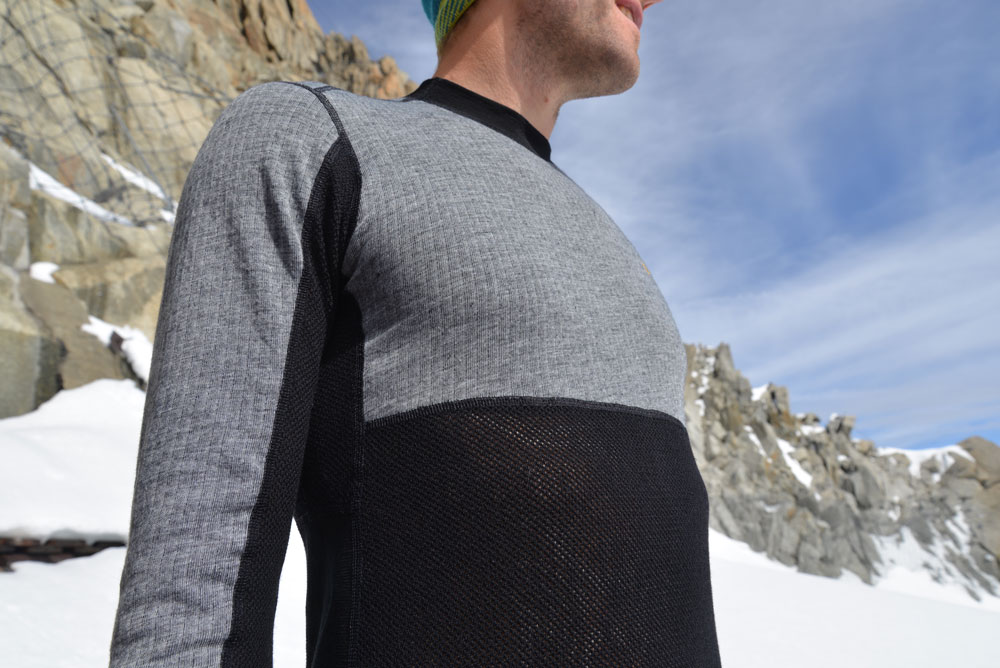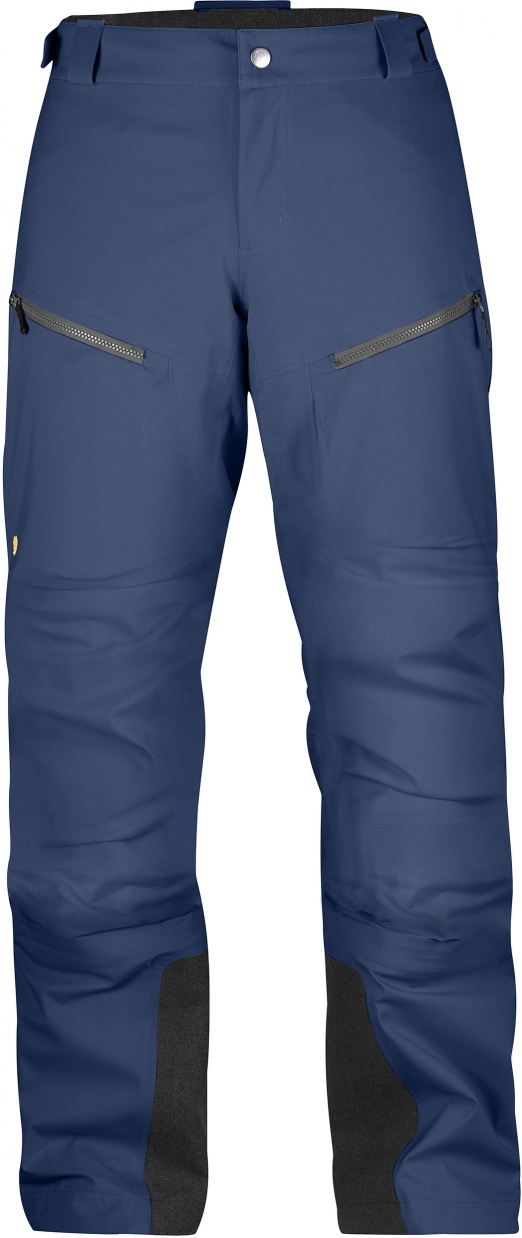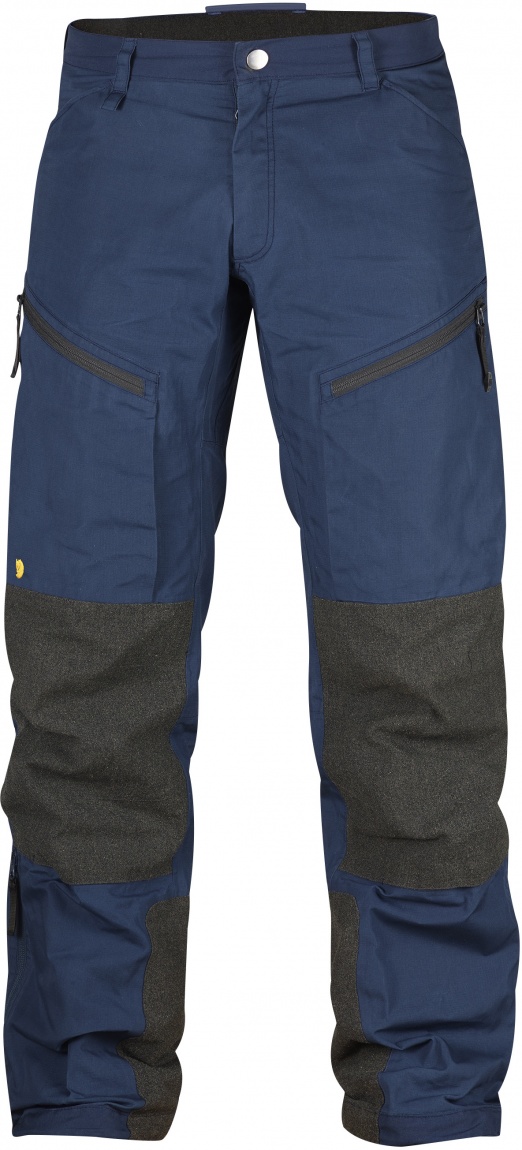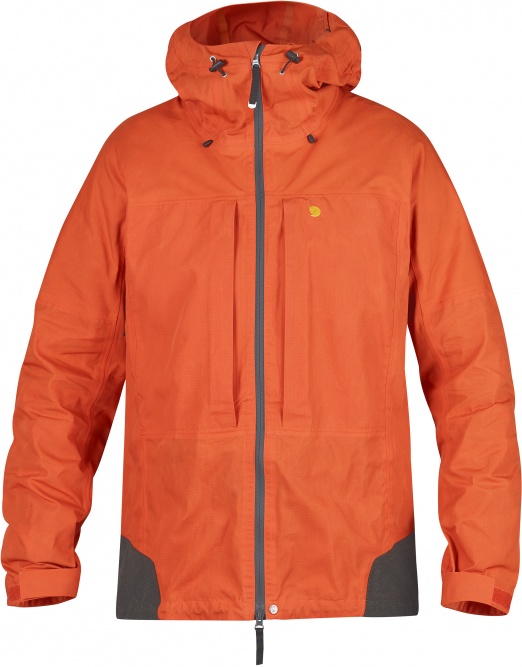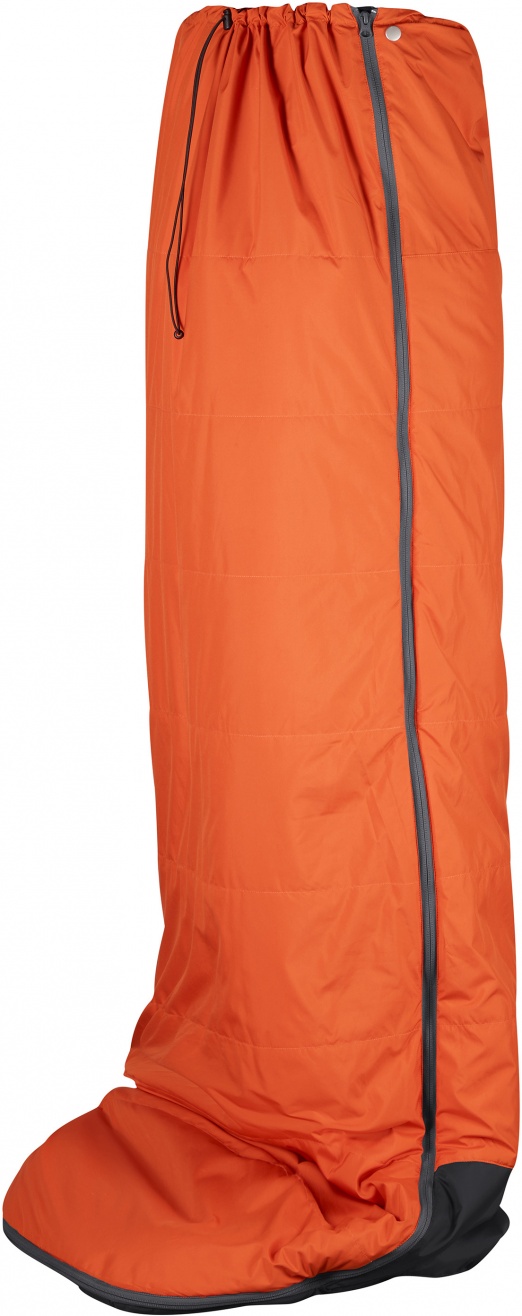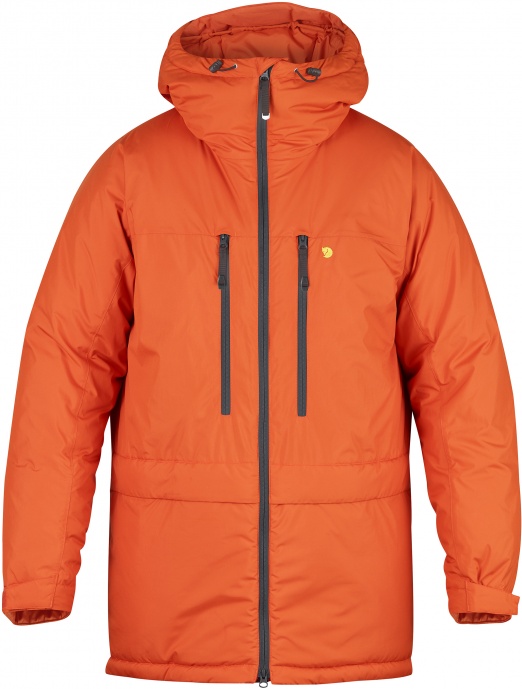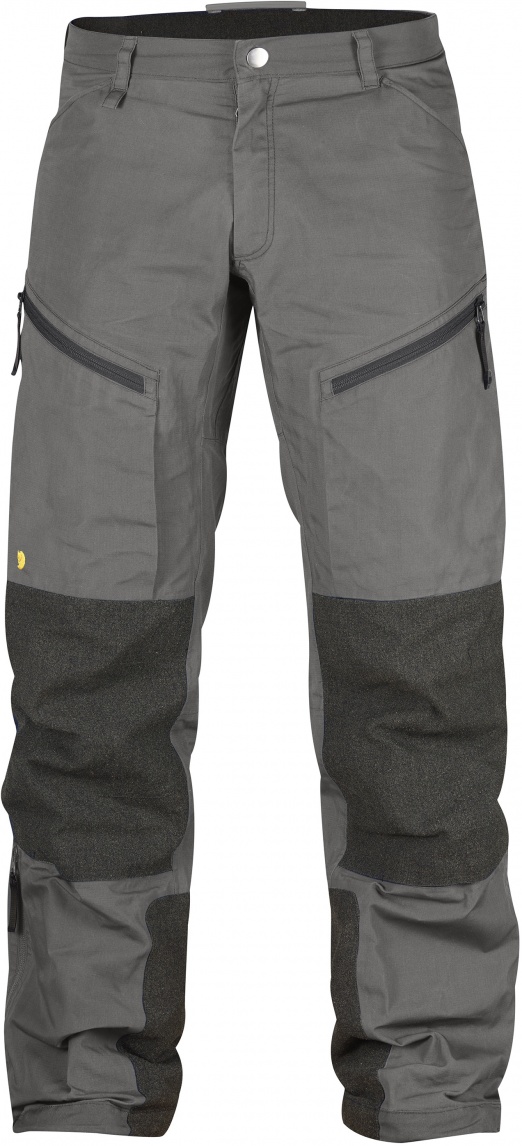Will Harris tests out a selection of items from Fjällräven's new Bergtagen range
With their Bergtagen range Fjällräven have developed their first garments designed specifically for use in an alpine setting, with climbing, ski mountaineering and trekking in mind.
There are a number of features which run through the range, the most notable on first inspection being the patches of hard-wearing grey material which are found on the elbows, knees, insteps and lower backs of the jackets and trousers in the range. A little retro in style, these patches are certainly tough, standing up well to some serious scraping during our test without showing any signs of wear. The inclusion of these patches is consistent with Fjällräven’s values, rejecting the idea that gear should be super lightweight and super disposable, and instead making fully-featured, slightly heavier but much burlier gear that is built to last.
A small detail throughout the range, but one that users will either love or hate, are the toggles that are attached to many of the zips on the jackets and trousers in the Bergtagen collection. Featuring a reasonably large rubber wedge attached by 5cm piece of webbing, these feel a little clunky when first used, although this does become unnoticeable after a short while. The simple solution for those who find the toggles to be annoying or unsightly would be a pair of sharp scissors.
Both the Eco-Shell Jacket and the matching Eco-Shell trousers use Fjällräven’s Eco-Shell fabric. This waterproof and breathable fabric has been designed to rival more established fabrics, such as Gore-Tex and eVent, whilst limiting the environmental impact of producing these fabrics. Made of completely recycled polyester, Fjällräven are keen to point out that Eco-Shell is one of the greenest fabrics available on the market.
Perhaps the most impressive feature of the fabric from an environmental perspective is the way that it is made without the use of fluorocarbons (PFC’s), chemicals which when impregnated onto the surface of a material help to repel water, giving the beading effect that forms the first line of defence against water ingression. The downside of these fluorocarbons is that they are unpleasant, don’t decompose, and are released both in production and whilst you are wearing products which use them. There is an industry-wide move towards producing well-performing fabrics that steer clear of these chemicals, and Fjällräven are ahead of the curve with their contribution. The only question that is left to be answered is whether these new PFC-free fabrics will have the durability of more well-established fabrics. Only time will tell…
Bergtagen Eco-Shell Jacket
With the Bergtagen Eco-Shell jacket, Fjällräven have created a simple, functional, fully waterproof jacket with some nice features. Like all of Fjällräven’s products, the jacket is designed in Sweden, and this shows in the cut, with the taller Scandinavian figure very much in mind. In a size Medium the jacket fitted me well, with a lean 6’ 5’’ frame. The body of the jacket is cut longer than others on the market in the same size, which works particularly well when wearing with a harness, as the bottom of the jacket stays neatly tucked into the harnesses waist band even when reaching up. Equally, the arms are nice and long for a medium-sized jacket, great for the longer limbed climber who wants to keep their wrists covered. The hood is well sized, extending to fit comfortably over even the largest of modern lightweight foam helmets. Two chest pockets work well, positioned out of the way of a harness, and big enough to comfortably fit an OS map or climbing guidebook.
I tested the jacket over several weeks of scrambling and climbing in North Wales in August and September, during some of the wettest and windiest weather imaginable. The good news is that the jacket kept me dry during even the heaviest downpours, and kept the wind off in some in some extremely breezy conditions. The Eco-Shell fabric used is slightly stretchy, making it very comfortable to wear and giving great freedom of movement when climbing. The pitzips work well, allowing for extra breathability when working hard on the uphill.
Bergtagen Jacket
The Bergtagen Jacket and Trousers are perhaps best understood as fitting into the space in a range usually served by softshell, being hard wearing, breathable and shower proof, but in place of soft shell, Fjällräven use their unique G-1000 material. Consisting of a tightly woven polyester/cotton blend that is then treated with Greenland wax, this has become one of Fjällräven’s signature fabrics, and is particularly popular with outdoors people living in the cold Scandanavian and Canadian climates. The cut and features of the Bergtagen Jacket are very similar to those found on its waterproof brother, the Eco-Shell Jacket, with many of the same pluses. The only obvious difference between the two items is that the feeling of freedom of movement that is a major plus of the Eco-Shell jacket is less obvious in its wax equivalent. The G-1000 material lacks some of the stretch of the Eco-Shell, and this makes it feel a little more constricting, and causes the waist of the jacket to rise up when reaching above your head. That said, it is a bombproof, nicely produced piece of gear that works well in cold and windy conditions.
Bergtagen Trousers
Like all of the pieces in the Bergtagen range, the trousers have the feel of a well built, heavy duty piece of kit, with plenty of extras thrown in to set them apart from the competition. With reinforced patches on both the knees and instep, and extra reinforcement of the ankle cuff, they’re made to last, which is what you would hope with the attached price tag. They have pockets both at the top of the thigh, as well as a zip up pocket above each knee. Along with these conventional features they also have a short ventilation zip on each leg, with two zippers at each end, a similar short double-zippered zip at each ankle, and a strap and metal buckle on each ankle designed to act like a gaiter. I suspect that these extras will appeal to some users, whilst others will be turned off by the feeling of there being a little too much going on for what is essentially a pretty simple item of clothing. We tested the 33’’-34’’ waist version, and they were comfortably long enough for my 34’’ leg, further confirming that the range is very much cut with the taller figure in mind.
Bergtagen Woolmesh Sweater and Longjohn
On first impressions the Bergtagen woolmesh sweater and long johns look pretty unusual, combining panels of sting vest-like knitted panels, wool flannel and stretchy black material, all rounded off with elasticated cuffs. They certainly feel unusual when first worn, but this feeling soon disappears, and you are left instead feeling both warm and comfortable in a baselayer pairing that is also extremely breathable. Made from a merino wool blend, they also have the quality of resisting the unpleasant pong that synthetic alternatives can suffer from.
Though the Bergtagen range has been designed as a system, all of the pieces can be mixed and matched of course. Overall we’ve been impressed with the design, functionality and eco credentials of the range.


